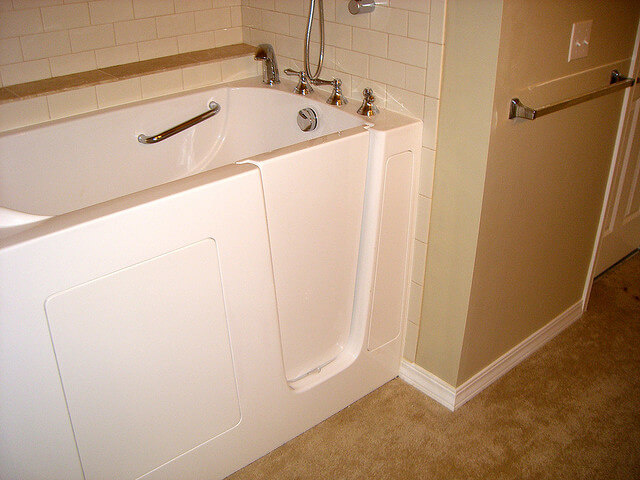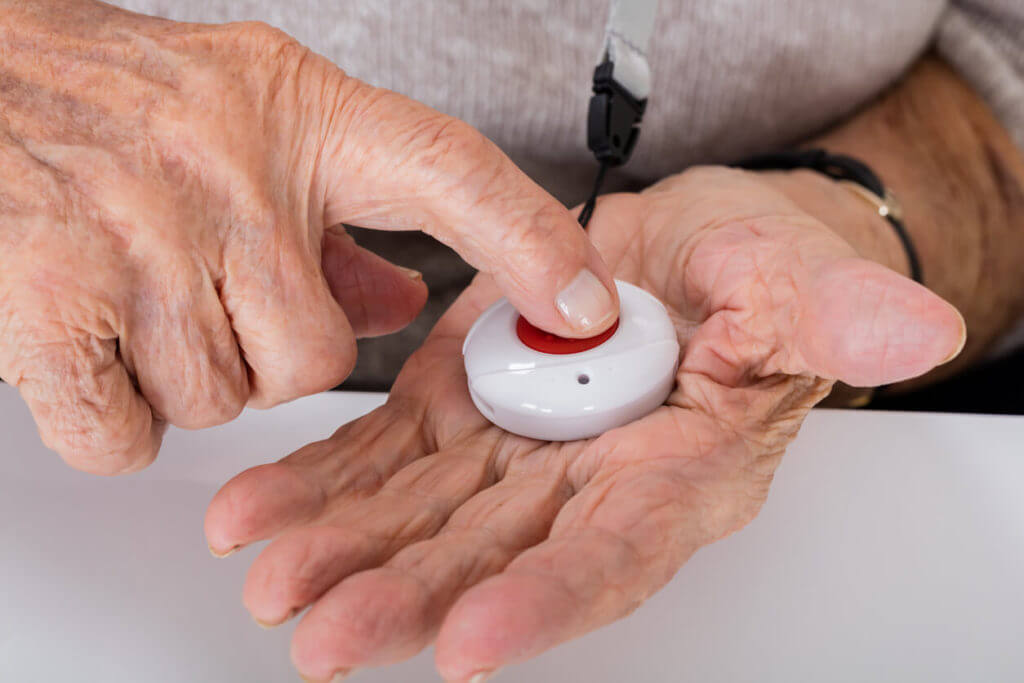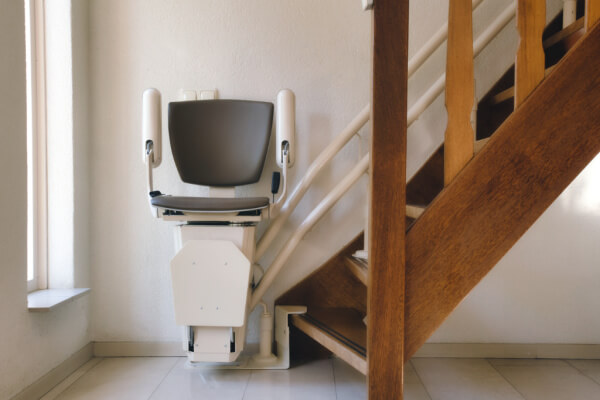Home Accessibility Modifications for Independent Living
Long gone are the days when someone with increasing mobility challenges and needs must consider leaving their beloved home for an assisted living facility or some other type of arrangement. With good use of universal design elements and home accessibility considerations throughout the home, as well as devices that help keep seniors safe, individuals are living and thriving in their own homes for longer.
We are well aware of the issues that surround aging and thus, the need for good universal design and home accessibility. For instance, the CDC reports that one out of four older adults has a fall every year. Home hazards are one of the conditions that make a fall more likely, and falls are the most common cause of traumatic brain injuries.
Modernize is committed to helping homeowners safely modify their homes – so that they can both enjoy the comfort of living in their own home, and do so with as little risk possible.
Let’s take a look at a few ways to foster home accessibility and safety — not just for seniors, but for everyone who might live in the household. Some of these options include walk-in tubs, stair chair lifts, and medical alert devices.
Walk-In Tubs
When looking at elements of the bathroom designed to bolster home accessibility for those who want to age in place, a walk-in tub is a must.
Conveniently, these tubs usually fit into the same space as your existing tub. But the safety features also make it a long-term investment not only in the comfort and safety of your bathroom, but also in the potential resale value of your home down the road.
What Is a Walk-In Tub?
Walk-in tubs have doors that open over a very low threshold. This makes it much easier to step into the tub, especially for those with mobility challenges. Once the door is closed, a tight seal makes it leak-proof, allowing you to fill it up with water without worry about damaging your floors.
The tub has a raised seat, built-in grab bars, textured flooring for slip-resistance, and other features that are dependent upon the style you choose. Features to consider include a detachable water spout, quick-drain option, aromatherapy, and anti-scald water temperature protection. Bear in mind that a bathing alternative to the walk-in shower to consider is the roll-in shower, which is designed for wheelchair users.
Types and Features of Walk-In Tubs
Walk-in tubs are often divided into a variety of types, depending on their purpose and features. Some of the best and most common types of walk-in tubs include:
- Bariatric tubs. These tubs have all the features of the typical walk-in tubs, but have a higher weight capacity and include a wider seat for larger individuals of up to 600 pounds.
- Wheelchair-accessible tubs. While all walk-in tubs are designed for those with mobility challenges, wheelchair-accessible tubs are made specifically for those who use wheelchairs. These tubs have outward-facing doors and lower seats, thus allowing for easier and safer transfer from the wheelchair to the tub.
- Soaker tubs. These tubs tend to be more basic in design, with low-threshold entry, grab bars, anti-slip floors, raised seat, and anti-scald protections. Soaker tubs are also deep enough for a person to submerge their body completely while still sitting on a bench. They are also often the most affordable types of walk-in tubs.
- Lay-down tubs. These walk-in tubs tend to be longer options that allow for room to safely lie down. The idea is that you can lie down in the tub and get as close to the traditional bathtub experience as possible.
- Hydrotherapy tubs. Similar to massage tubs, these walk-in tubs are equipped with jacuzzi jets. The jets allow water to flow around in the tub for relaxation, muscle soreness or improved cardiovascular health.
- Walk-in tub/shower combo. The walk-in tub with a combined shower is designed like traditional shower/tub combos. It has the ability to easily switch from faucet to showerhead to allow homeowners to choose either option. Walk-in tub/shower combos also come with safety features, like grab bars and anti-slip flooring.
Walk-In Tub Costs
A walk-in tub might seem like a luxury, but it is also often a necessity to allow individuals to live in their home independently for longer.
Unfortunately, most insurance policies including Medicare do not cover walk-in tub installations for home accessibility purposes. However, insurance policies vary widely. The only way to know what insurance will cover with walk-in tubs is to look over your policy or talk to your insurance representative.
Many homeowners will have to pay out of pocket for — or finance — a walk-in tub installation. Prices for walk-in tubs will vary widely depending upon several considerations, such as:
- The type of walk-in tub
- How much electrical or plumbing work must be done
- Local building code requirements
- Bathroom flooring conditions
Medical Alert Systems
Medical alert systems are becoming a go-to home accessibility resource for potential emergencies. Highly recommended by AARP, medical alert devices help keep seniors safe in their home, thus allowing more independence.
The options for medical alert devices are almost endless. They range from monitors that cover the whole house, to small wearable devices that detect falls and allow a person to call for help by pressing button.
Types of Medical Alert Systems
You have plenty of options when it comes to a medical alert system for you or your loved one. The best choice for you depends on you or your loved ones needs and challenges. Here are some of the most common options for the best medical alert systems:
- Fall detection devices. This basic device can be used on its own or with a more comprehensive system. The device is worn on the body, usually as a bracelet or necklace, and senses the sudden motion of a fall.
- Mobile alert devices. Mobile systems can go with you anywhere you go. They have GPS tracking for individuals who might wander or get lost, and allow you to press a button if something goes wrong. This is good not only for falls but for other incidents, such as if a person begins to experience chest pain and needs an ambulance.
- Home-based systems. These medical alert devices are designed to work within the confines of your home, and allows for calls for help through a landline. These systems are good for those who are housebound and need coverage across the entire home.
- Monitored or unmonitored. Some systems offer monitoring, which means when you click the button on the device, a call center answers. The center is available around the clock and will call for the appropriate help. The other option is unmonitored, which connects the individual to a family member, friend or neighbor who has agreed to be the point of contact for emergencies.
How Do Medical Alert Systems Work?
Medical alert systems work slightly differently depending on the type. However, here is the most common way in which a medical alert system can help during an emergency incident:
- The user suffers a fall or other emergency event.
- That user presses a button on the necklace or bracelet they wear.
- In some cases, fall detection systems trigger an immediate phone call from a call center.
- The user’s information is sent immediately to the proper emergency operations center.
- The operator speaks with the user over a speaker and assesses the situation.
- The operator contacts a family member, neighbor, friend, or the proper medical assistance, depending upon the need.
Cost of Medical Alert Systems
Given such a wide range of options, the costs of medical alert systems vary widely too. Of course, the more elaborate the system, the more expensive it is.
When you are ready to boost independent living and home accessibility for you or your loved one, research and compare the various medical alert systems. Start asking questions, such as what equipment you will receive, when and how it will be delivered, what setup will require, and more.
Modernize can connect you with the individuals who know medical alerts inside and out, and can do everything from answer your initial questions to complete an installation for you.
Stairlift Systems
When it comes to home accessibility, one of the greatest hazards in the home can be the stairs. Whether it is a long staircase that stretches from one floor to another, or just a few porch steps, they can be tough to navigate for those who have balance or mobility challenges. Independence for seniors can become an issue when they live in a home with stairs.
Stairlifts are devices designed specifically to help individuals make their way safely and securely up stairs. This allows them more independence and the opportunity to stay home, even if they are dealing with progressive mobility issues.
Stairlifts are firmly attached to a rail that runs along the length of your staircase. The user simply sits in the chair, usually strapped in firmly. Then, they push a button or flip a switch to move up and down the stairs with ease.
Stairlift Costs and Types
Stairlifts can be used in any area of the home that has stairs. Here is a general idea of the types of stairlifts available what they might cost you:
- Straight stairlifts. This is one of the easiest installs for a stairlift. It is designed for straight staircases. These stairlifts simply attach to a rail that goes between floors. Of course, adding bells and whistles to the lift might increase the price, but you can generally expect something in the $2,000 to $5,000 range.
- Curved stairlifts. These home stairlifts work the same as straight ones, but they move along a rail that is customized to fit your particular curved staircase. Curved stairlifts can often also accommodate staircases with landings. These chair lifts are often custom-built, which means installation prices rise. They often start around $9,000 to $10,000.
- Outdoor stairlifts. These stairlifts can be installed outdoors where stairs are present, such as for front door entryways or patios. They are designed to handle the elements, including temperature extremes, snow, rain, and more. These can be installed on a railing over just a few steps to help you get up a set of porch steps and into your home. Or they can be much longer, such as a stairlift that takes you up and down to a dock. Straightforward outdoor lifts can run in the $5,000 to $7,000 range, while custom or longer lifts can run $12,000 and up.
Best Stairlift Brands
With so many stairlift brands on the market today, it can be challenging to decide which one is the best for your home and safety. There are likely a few brand names you have heard of, and others you have not.
No matter whether you recognize the stairlift brand name or not, it is important to do your research and compare stairlift companies before making a decision. Consider important factors like installation cost, warranties, important features that you need, and whether the brand makes stairlifts suited for your staircase. Modernize created a list of the Top 10 Stairlift Brands to make your decision making process easier.
Stairlift Installations
You might wonder if a stairlift will hurt the value of your home. It is important to remember that universal design trends always get attention from buyers who are looking to stay in their home for as long as possible.
When it comes to installation itself, there are a few anchor points that hold the rail in place. But often there is little serious construction involved. This means a stairlift can be installed and later removed if necessary, with little fuss – as long as you are using a professional installer.
A stairlift can be a big home accessibility investment. But it is also an investment that can make homes more accessible and safe. Since this is a machine designed to actually move someone from one place to another, the placement and installation must be precise and careful. Finding a professional installer through Modernize is an essential step in making sure you’re getting the safest product possible.











